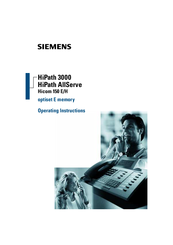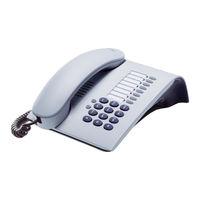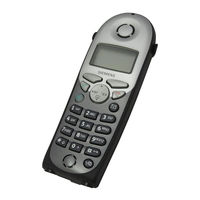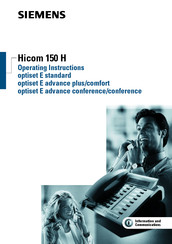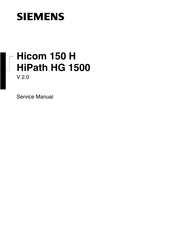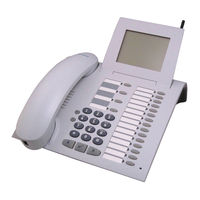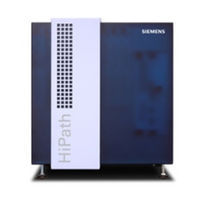Siemens hicom 150 H optiset E standard Manuals
Manuals and User Guides for Siemens hicom 150 H optiset E standard. We have 15 Siemens hicom 150 H optiset E standard manuals available for free PDF download: Operating Instructions Manual, Service Manual, Administrator's Manual
Advertisement
Siemens hicom 150 H optiset E standard Operating Instructions Manual (114 pages)
Siemens Telephone User Manual
Table of Contents
Siemens hicom 150 H optiset E standard Operating Instructions Manual (114 pages)
HiPath AllServe Hicom 150 E/H
Table of Contents
Advertisement
Siemens hicom 150 H optiset E standard Operating Instructions Manual (68 pages)
Brand: Siemens
|
Category: Cell Phone
|
Size: 1 MB
Table of Contents
Siemens hicom 150 H optiset E standard Operating Instructions Manual (66 pages)
Siemens Cordless EM Mobile Telephone Operating Instructions
Table of Contents
Siemens hicom 150 H optiset E standard Operating Instructions Manual (68 pages)
Hicom 150 E/H optiset E entry
Table of Contents
Siemens hicom 150 H optiset E standard Service Manual (47 pages)
Brand: Siemens
|
Category: Offroad Vehicle
|
Size: 0 MB
Table of Contents
Siemens hicom 150 H optiset E standard Operating Instructions Manual (60 pages)
DTMF telephones, pulse telephones
Table of Contents
Siemens hicom 150 H optiset E standard Administrator's Manual (46 pages)
Brand: Siemens
|
Category: Telephone System
|
Size: 2 MB
Table of Contents
Siemens hicom 150 H optiset E standard Operating Instructions Manual (38 pages)
Attendant C for Hicom 150 H optiset E as attendant console
Table of Contents
Siemens hicom 150 H optiset E standard Administrator's Manual (46 pages)
Brand: Siemens
|
Category: Telephone System
|
Size: 2 MB
Siemens hicom 150 H optiset E standard Operating Instructions Manual (42 pages)
Hicom Assistant TC for Hicom 150 H optiset E for System Administration
Advertisement
Related Products
- Siemens Hicom 150 E Office
- Siemens HiPath 4000
- Siemens hicom 150 H optiset E advance plus
- Siemens Hicom 150 optiset E standard
- Siemens Hicom 150 E/H
- Siemens Hicom 150 E optiset E basic
- Siemens Hicom 150 E optiset E standard
- Siemens Hicom 150 E optiset E advance plus
- Siemens Hicom 150 E optiset E comfort
- Siemens Hicom 150 E optiset E conference
